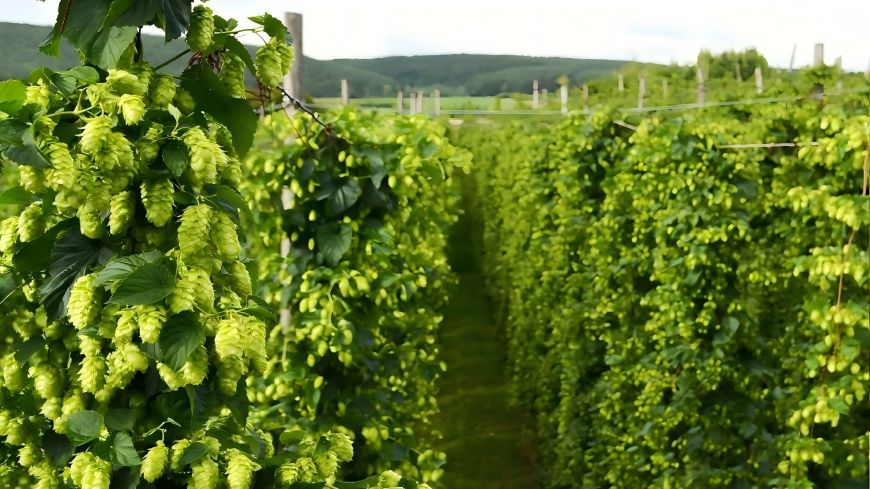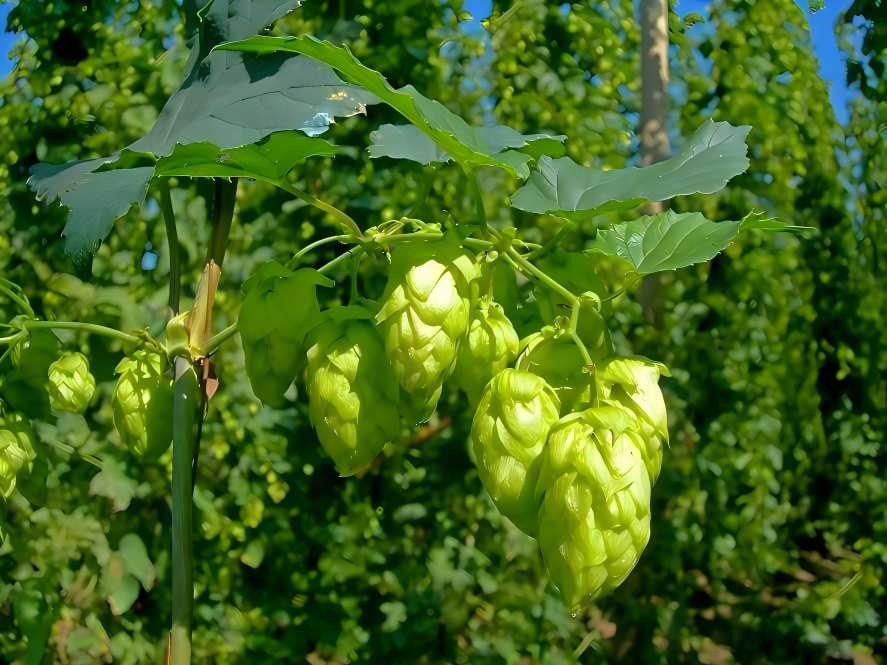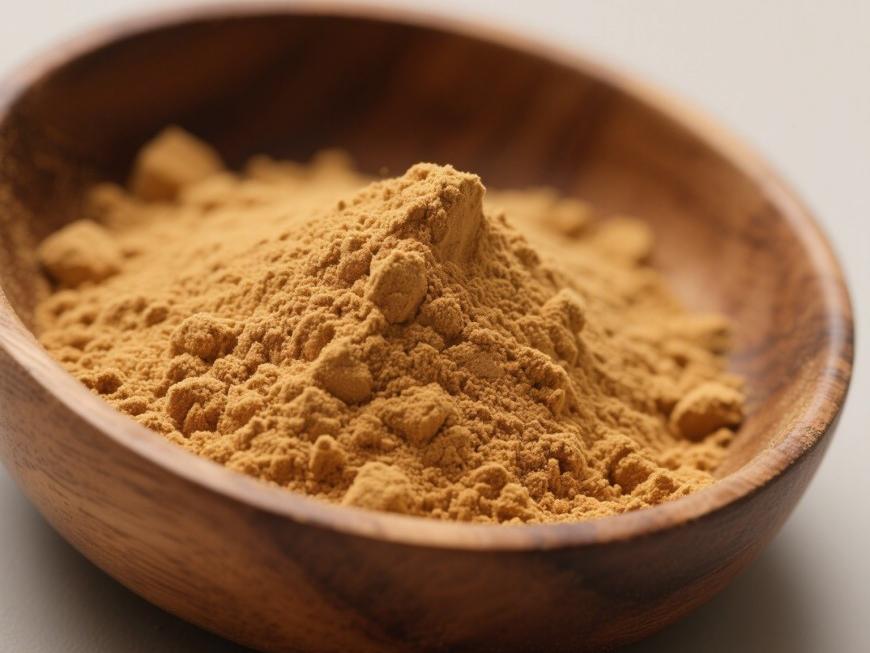Exploring Hop Extract as a Clean-Label Ingredient Solution for Natural Preservation
In today's global food industry, where clean labels and natural health concepts are sweeping the market, extracts derived from traditional plant hops (Humulus lupulus L.) are emerging as a new solution to replace chemical additives, thanks to their exceptional natural preservative potential. In this field, Green Spring Technology is committed to providing customers with high-standard, high-performance hop extract ingredients, empowering product innovation and upgrades.
Hops are not only celebrated as the “soul of beer” but also serve as a naturally multifunctional botanical ingredient. Its extracts are rich in active components such as polyphenols (α-acids, β-acids, xanthotoxin) and flavonoids. These components synergistically form a powerful, broad-spectrum inhibition capability against Gram-positive bacteria, providing a safe and natural pathway to extend the shelf life of food, beverages, plant-based products, and condiments.
The core advantages of Green Spring Technology's hop extracts include:
· Highly effective natural preservation: High concentrations of active compounds (α-acids/β-acids) significantly inhibit common spoilage bacteria, enabling customers to replace chemical preservatives and meet clean label requirements;
· Excellent stability and compatibility: Product performance remains consistent across varying pH levels and formulation systems, simplifying development processes;
· Dual functional value: Beyond preservation, it offers antioxidant properties that protect product flavor and color while delaying oxidative deterioration;
Through refined processes and stringent quality control, Green Spring Technology ensures consistent ingredient composition and efficacy in every batch. This empowers clients to enhance product competitiveness and accelerate the launch of “natural, safe, and transparent” health products aligned with future market trends.

1 Hops Extract: A Clean-Label Preservative Solution from Nature
The core functional components of hops extract provide a robust material foundation for its use as a natural preservative, perfectly aligning with clean-label product development needs.
1.1 Core Antibacterial Resin Components
The soft resins in hops extract, particularly alpha acids and beta acids, are the key active substances responsible for its natural preservative function. These natural compounds exhibit strong inhibitory effects against diverse microorganisms, possessing reactive properties that facilitate transformation. Under specific conditions, α-acids can isomerize into iso-α-acids, which not only contribute a pleasant bitterness but also significantly enhance water solubility and antimicrobial efficacy, making them an ideal natural alternative to chemical preservatives.
1.2 Synergistically Enhanced Flavonoid Compounds
Hops are rich in diverse flavonoids, with humulone—a distinctive isoprenoid flavonoid—garnering particular attention. Naturally secreted by hops, humulone possesses inherent biological activity and synergistically interacts with resin components to enhance the extract's overall stability and preservative efficacy, making it a high-value ingredient in premium natural preservative formulations.
1.3 Natural Aromatic Essential Oils
Hops essential oils primarily consist of pure-scented oxygenated compounds (e.g., sandalwood alcohol with woody notes, geraniol with rose-like fragrance). These components not only provide elegant aromas but may also exhibit auxiliary antibacterial properties according to certain studies. They deliver natural preservative functions while harmoniously integrating into product flavor systems, avoiding chemical-like sensations.
1.4 Other Natural Components
Additionally, natural constituents in hops—such as tannins and lipids—collectively form a complex, synergistic natural active system. Together, they underpin the ingredient's potential for mild, effective, and safe preservative applications.
In summary, through the synergistic action of its diverse natural bioactive components, hop extract provides robust raw material support for achieving clean label declarations. It effectively meets the process requirements for food preservation while aligning with consumers' core demands for “natural, transparent, and healthy” products, making it an ideal choice for developing next-generation natural preservatives.
2 Hops Extract: Empowering Clean Label Preservatives with Natural Power
As a highly regarded clean-label ingredient, hops extract's core value lies in its exceptional natural antimicrobial properties, offering an efficient and safe alternative to chemical preservatives. Research indicates that natural components in hops—such as alpha acids, beta acids, and humulone—exhibit significant inhibitory effects against various Gram-positive bacteria (including staphylococci and streptococci). Among these, humulone and humulone not only effectively suppress common spoilage bacteria but also demonstrate good activity against certain drug-resistant strains.
This gentle yet potent antimicrobial mechanism makes it particularly suitable for high-quality food systems pursuing clean label standards. Hops extract can be incorporated into diverse applications—meat products, plant-based alternatives, condiments, and baked goods—extending shelf life while meeting consumers' core demands for “no artificial additives” and “natural ingredients.”
Beyond its significant antimicrobial properties, hop extract possesses outstanding antioxidant potential, further enhancing product stability and quality preservation. Its rich polyphenolic compounds effectively delay lipid oxidation, safeguarding product flavor and nutrition to deliver dual natural protection through “preservation + antioxidant” action.
As a green, sustainable ingredient choice, hop extract perfectly aligns with the global clean label trend, offering the food industry a new preservative pathway that combines efficacy with transparency. Through precise extraction and standardized processes, Green Spring Technology ensures batch-to-batch consistency and reliable performance of its hop extract, collaborating with clients to develop next-generation natural health products.

3 Green Spring Technology's Hop Extract Empowers Clean Label Product Innovation
As the clean label trend deepens, hop extract has emerged as a key alternative to chemical preservatives due to its natural antimicrobial and antioxidant properties. Leveraging modern extraction and stabilization technologies, Green Spring Technology focuses on enhancing the efficacy and stability of core active components (such as alpha acids, beta acids, and xanthones) in applications, driving broader adoption across food, beverages, and health products.
Currently, our highly stable α-acid and β-acid derivatives—developed through processes like hydrogenation—effectively overcome the instability of natural extracts under light exposure and storage. This provides customers with more reliable, adaptable natural preservative solutions. Simultaneously, the synergistic effects of multiple active components in hop extracts open possibilities for developing innovative products that combine preservative benefits with health value.
Green Spring Technology will continue to deepen its expertise in natural ingredients, collaborating with industry partners to explore innovative applications of hop extracts in clean-label products. We empower businesses to address consumers' core demands for “natural, transparent, and safe” solutions, jointly pioneering a new future for the health food industry.
Contact us today to obtain samples and technical solutions at helen@greenspringbio.com or WhatsApp: +86 13649243917, and let's co-create new value in clean labeling!
References
[1]Chinese Academy of Sciences. Flora of China [M]. Beijing: Science Press, 2013.
[2]Zhang Xia, Xu Jiping, Liu Haiying, et al. Geographic distribution of hops and wild hops in China [J]. Arid Land Resources and Environment, 2008, 22(1): 180-183.
[3] Zhu Dan, Niu Guangcai, Jiang Shujun, et al. Chemical Constituents and Pharmacological Effects of Hops [J]. Pharmaceutical Special Topics, 2008, 17(21): 1-2.
[4] Yan Jingjing, Liu Shumin, Guo Zeqing, et al. Study on the Influencing Factors of α-Acid Isomerization Reaction in Hops Extract [J]. Food Research and Development, 2016, 37(10): 28-29.
[5] Shi Jie. Research Progress on Acidic Compounds in Hops [J]. China New Technology and New Products, 2011, 11(12): 5-6.
[6] Zhang Weiku, Wang Shoubao, Li Ping, et al. Flavonoid Components of Hops [J]. Chinese Journal of Traditional Chinese Medicine, 2013, 38(10): 1539-1541.
[7] Cao Yan, Feng Zuoshan, Wang Juan, et al. Effects of Hops Polyphenols on Lipid Metabolism in Ovariectomized Rats [J]. Food Science and Technology, 2015, 40(3): 221-223.
[8] Lin Liuyue, Jiang Yiping, Zhang Qiaoyan, et al. Research Progress on the Chemical Constituents and Pharmacological Activities of Hops [J]. Chinese Journal of Traditional and Herbal Medicine, 2017, 42(10): 1830-1834.
[9] Li Xianzhen, Wang Wei, Du Guocheng, et al. Research progress on the resistance mechanism of hops [J]. Journal of Microbiology, 2015(5): 1-5.
[10] Gao Zhiming. Antimicrobial activity and application expansion of hops [J]. Food Industry Science and Technology, 2012, 33(23): 428-430.
-
Prev
Horsetail Extract (7% Organic Silica) Boosts Skincare Formulations
-
Next
Natural Hop Extracts Empower Innovation in Bone Health Products


 English
English French
French Spanish
Spanish Russian
Russian Korean
Korean Japanese
Japanese




